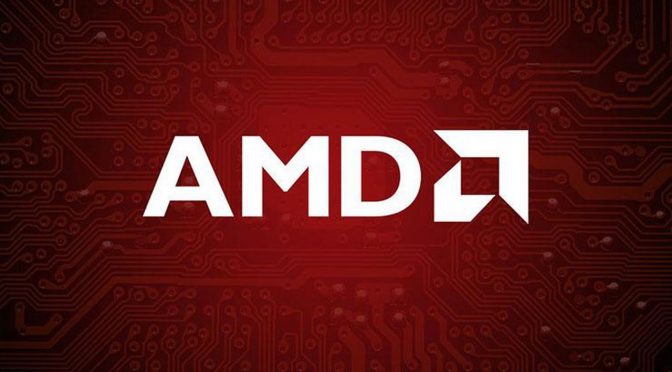During the latest earnings call for the second quarter of 2020, AMD reaffirmed its plans to introduce Zen 3-based Ryzen 4000 client Desktop CPUs and RDNA 2-based Navi 2X GPUs in the second half of 2020. This means Zen 3 and Navi 2x product lineup from AMD is on track. The next-generation Ryzen 4000 series of desktop processors are based on the new and refined Zen 3 architecture, and these processors are codenamed as Vermeer.
Vermeer series of processors will feature a new Zen 3 CPU architecture, bringing big changes to AMD’s core designs as well. This may definitively help with higher single-threaded and multi-threaded IPC boosts. When combined with higher clock speeds we can expect significant performance gains.
It was already reported before that AMD’s upcoming next-gen ZEN 3-based processors will have the 5000 series nomenclature. Two new SKUs were mentioned, the Ryzen 9 5900X and Ryzen 7 5800X, having 12 and 8 CPU cores, respectively. Now some alleged specifications of AMD’s Ryzen 9 5900X Vermeer desktop CPU have been leaked out by Tech Tuber, PC WELT, coming via Wccftech.
The Ryzen 9 5900X would be a 12 cores and 24 threads processor, and the leaker claims this to be the fastest chip in the Vermeer lineup, at least for now, and it will have a boost clock value of up to 5 GHz. The source also mentions that the Vermeer processor lineup will see IPC improvement of up to 20%. The 5 GHz boost clock value is for a single-core. The all core boost frequency should be less than 5 GHz.
Assuming this rumor/leak is accurate, the Ryzen 9 5900X would feature a +300 MHz clock speed improvement over the Ryzen 9 3900XT, and a +400 MHz improvement over the Ryzen 9 3900X CPU. The Ryzen 9 5900X will also have a TDP of up to 150W. The Ryzen 9 3900X has a default TDP value of 105W. AMD may slightly raise the power envelope to compensate for the boost clock improvement.
The Zen 3 CPUs will be officially revealed on October 8, and some specs were also leaked before which hinted at the performance level expected from these Zen 3-based CPUs. Likely to be fabbed on the TSMC’s 7nm+ EUV process node, the Zen 3 architecture is said to deliver better performance per watt ratio and efficiency than the previous Zen 2 lineup, which was already a revolutionary architecture from AMD.
According to some leaked official documents, Vermeer CPUs will be designed to be used in high-performance desktop platforms, and they are also going to feature up to two CCD’s (Core/Cache Complex Dies) and a single IOD (I/O Die).
We expect the Zen 3 architecture to bring at least 17% IPC uplift as compared to the previous gen Zen 2 CPU lineup. Zen 2 CPUs already featured double the L3 cache over the Zen/Zen+ series chips, and Zen 3 is going to take things to a whole new level. AMD’s next-generation Zen 3 architecture aims to alleviate some of the shortcomings of AMD’s existing architecture designs.
So, expect some AMD CPUs going as high as 5 GHz, to give Intel a stiff competition on the single-core frequency, along with a 50% increase in Zen 3’s floating-point operations and a major cache redesign. The AMD Zen 3 Vermeer series of processors will retain the multi-chip module (MCM) approach, aka the chiplet design.
The Zen 3 processors are also going to feature a combined and a unified L3 cache for each Zen 3 chiplet. This will make L3 cache access times more feasible across the entire Zen 3 chiplet. Larger cache sizes could mean longer cache latencies, and this is true for Zen 3 CPUs. The CPU cores can now share the information more easily. Larger cache sizes could help with boosting Zen 3’s multi-threaded, as well as Gaming performance.
Last week, Yuri Bubliy (@1usmus), the creator of the DRAM calculator for Ryzen and ClockTuner for Ryzen (a semi-automatic tool to find the best CCX in Ryzen processors), shared some more info. One of the key features of Zen 3 will be the support for a Curve Optimizer. This feature will allow you to configure the boost of the Ryzen CPU. In addition, you will also be able to customize the frequency for each core without any restrictions.
About Zen 3. Part 1.
One of the key features of Zen 3 will be the "Curve Optimizer" , which allows you to configure the boost of the Ryzen processor. In addition, you will be able to customize the frequency for each core without any restrictions.@AMDRyzen @AMD #ryzen
— 1usmus 🇺🇦 (@1usmus) September 7, 2020
Zen 3 processors will also feature Infinity Fabric dividers. What this means is that you can get the memory controller frequency slightly higher in mixed mode, and thus should provide more flexibility to the memory controller frequency configurations, such as mixed mode. The microcode in the BIOS also features the Infinity Fabric dividers. There also appears to be mention of a uniform load on CCDs with each CCD getting an equal proportion of cores.
Stay tuned for more!
Hello, my name is NICK Richardson. I’m an avid PC and tech fan since the good old days of RIVA TNT2, and 3DFX interactive “Voodoo” gaming cards. I love playing mostly First-person shooters, and I’m a die-hard fan of this FPS genre, since the good ‘old Doom and Wolfenstein days.
MUSIC has always been my passion/roots, but I started gaming “casually” when I was young on Nvidia’s GeForce3 series of cards. I’m by no means an avid or a hardcore gamer though, but I just love stuff related to the PC, Games, and technology in general. I’ve been involved with many indie Metal bands worldwide, and have helped them promote their albums in record labels. I’m a very broad-minded down to earth guy. MUSIC is my inner expression, and soul.
Contact: Email

